Smog Management & Climate Restoration
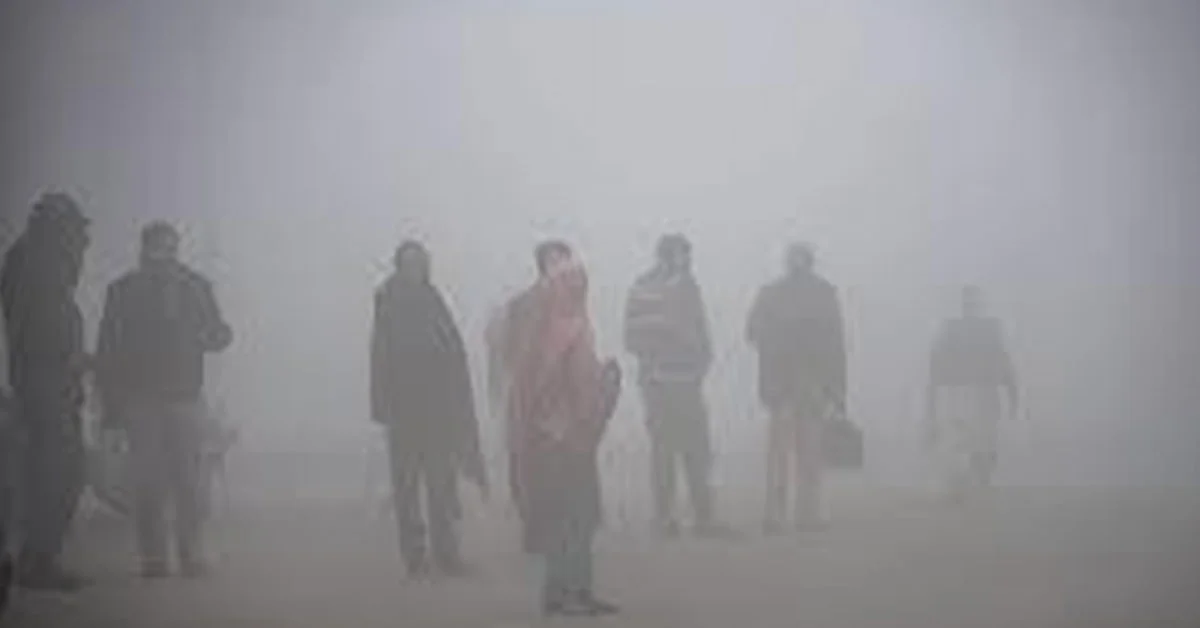
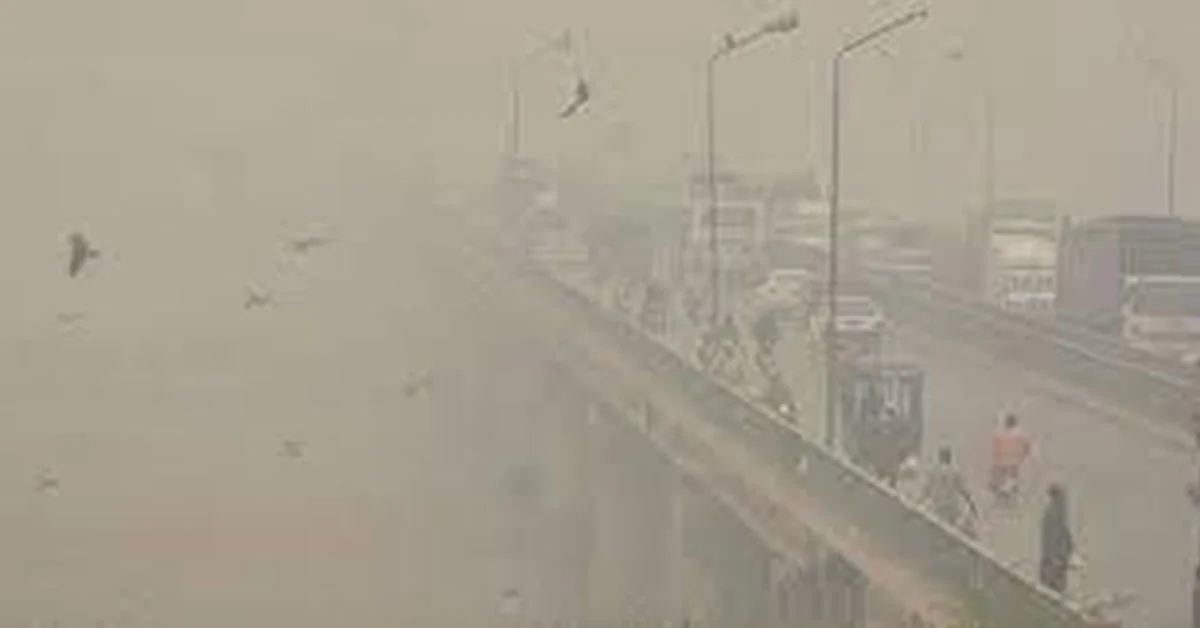
Introduction of Smog Management & Climate Restoration
20th century, and is a portmanteau of the words smoke and fog to refer to smoky fog due to its opacity, and odor. The word was then intended to refer to what was sometimes known as pea soup fog, a familiar and serious problem in London from the 19th century to the mid-20th century, where it was commonly known as a London particular or London fog. This kind of visible air pollution is composed of nitrogen oxides, sulfur oxide, ozone, smoke and other particulates. Man- made smog is derived from coal combustion emissions, vehicular emissions, industrial emissions, forest and agricultural fires and photochemical reactions of these emissions.
Smog is often categorized as being either summer smog or winter smog. Summer smog is primarily associated with the photochemical formation of ozone. During the summer season when the temperatures are warmer and there is more sunlight present, photochemical smog is the dominant type of smog formation. During the winter months when the temperatures are colder, and atmospheric inversions are common, there is an increase in coal and other fossil fuel usage to heat homes and buildings. These combustion emissions, together with the lack of pollutant dispersion under inversions, characterize winter smog formation. Smog formation in general relies on both primary and secondary pollutants. Primary pollutants are emitted directly from a source, such as emissions of sulfur dioxide from coal combustion. Secondary pollutants, such as ozone, are formed when primary pollutants undergo chemical reactions in the atmosphere.
Photochemical smog, as found for example in Los Angeles, is a type of air pollution derived from vehicular emission from internal combustion engines and industrial fumes. These pollutants react in the atmosphere with sunlight to form secondary pollutants that also combine with the primary emissions to form photochemical smog. In certain other cities, such as Delhi, smog severity is often aggravated by stubble burning in neighboring agricultural areas since the 1980s. The atmospheric pollution levels of Los Angeles, Beijing, Delhi, Lahore, Mexico City, Tehran and other cities are often increased by an inversion that traps pollution close to the ground. The developing smog is usually toxic to humans and can cause severe sickness, a shortened life span, or premature death.
Composition
Particulate matters, CO, CO2, SOx, NOx, unburnt hydrocarbons, dust particles, smoke, and atmospheric moisture.
Particulate matter (PM)
PM is a common proxy indicator for air pollution. There is strong evidence for the negative health impacts associated with exposure to this pollutant. The major components of PM are sulfates, nitrates, ammonia, sodium chloride, black carbon, mineral dust and water.
Carbon monoxide (CO)
Carbon monoxide is a colorless, odorless and tasteless toxic gas produced by the incomplete combustion of carbonaceous fuels such as wood, petrol, charcoal, natural gas and kerosene.
Ozone (O3)
Ozone at ground level – not to be confused with the ozone layer in the upper atmosphere – is one of the major constituents of photochemical smog and it is formed through the reaction with gases in the presence of sunlight.
Nitrogen dioxide (NO2)
NO2 is a gas that is commonly released from the combustion of fuels in the transportation and industrial sectors. When the fossil fuels are burnt at high temperature, nitrogen oxides are formed and get into environment. Usually nitrogen based emissions are illustrated by NOx.
Sulfur dioxide (SO2)
SO2 is a colorless gas with a sharp Oduor. It is produced from the burning of fossil fuels (coal and oil) and the smelting of mineral ores that contain sulfur. The fossil fuels with more sulfur level, produces higher oxides. Its in generic represented as SOx.
Smog is a crisis in Pakistan
Air quality in Pakistan exceeds safe limits in all major cities, with Lahore 9x worse than national guidelines (PAQI data).
135,000 deaths per year are attributed to ambient air pollution, making it the leading cause of sickness and death in Pakistan, as well as reduced life expectancy by 60 months. Smog is a public health emergency.
>5.88% of GDP or $47.8 billion is the estimated economic burden of air pollution in Pakistan. Urgent action on air pollution makes economic sense.
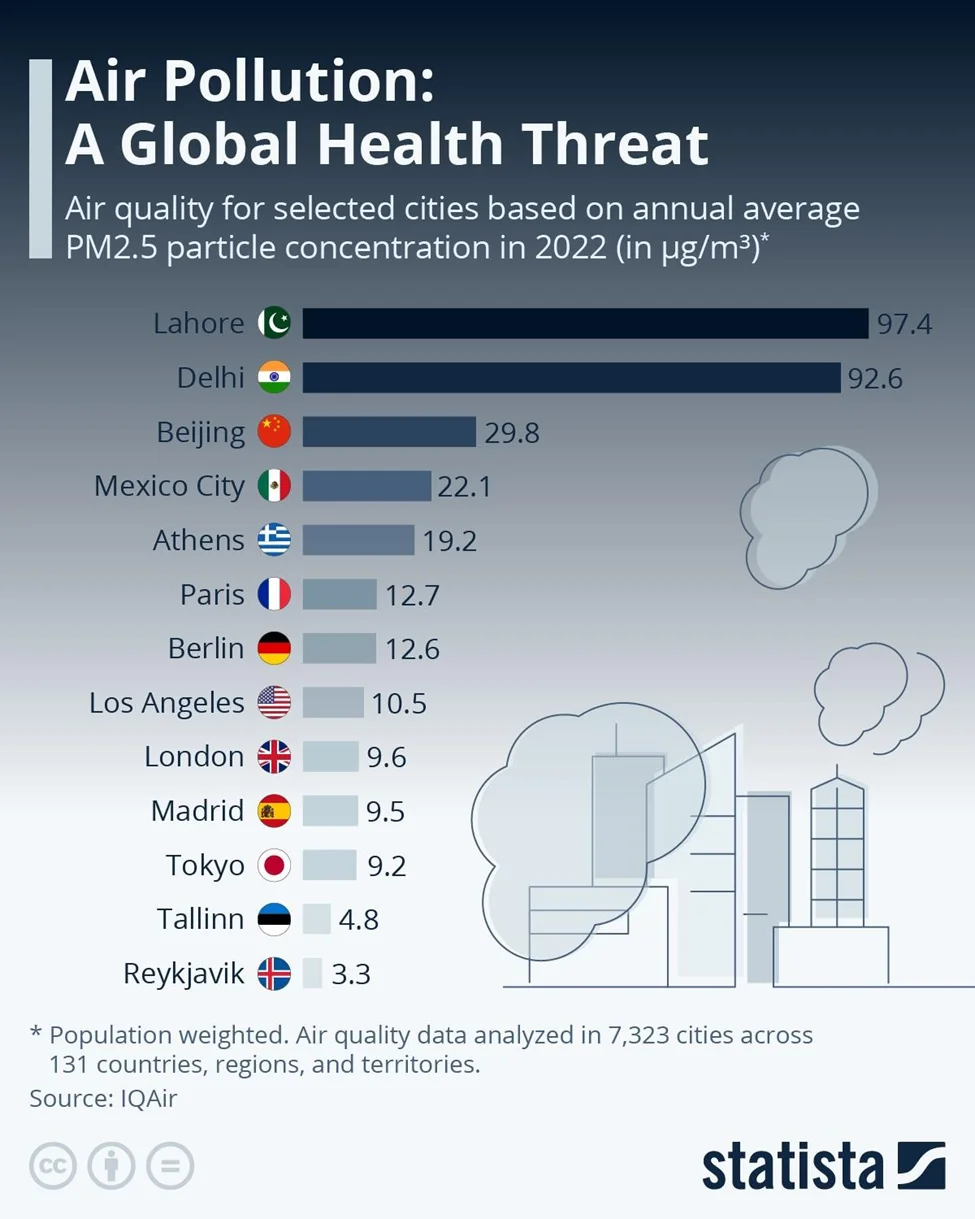
According to the statistics provided by the independent air quality monitors meet up by the Pakistan Air Quality Initiative community, all cities measured in Pakistan exceed safe levels for air quality
recommended by the National Environmental Quality Standards for Ambient Air by the Environmental Protection Agency in Pakistan (PK-EPA). This air quality may result in serious health effects, aggravating lung and heart diseases and causing respiratory effects in the general population.
Lahore has the worst air quality, with only 2 days of good air quality in 2017, where smog has become a ‘fifth season’. “Similarly, to fog, pollutants in the air are trapped within the temperature inversion layer close to the ground,” explained Abid Omar, founder of the Pakistan Air Quality Initiative. “This build-up of pollutants is hazardous to health during the winter months from October to December. Citizens are advised to take precautions to avoid exposure to this dangerous air.”
The sources of air pollution in Lahore are from diesel emissions, burning of biomass (crop burning), coal combustion (brick kilns and coal power), two-stroke vehicles (motorcycles and rickshaws), industrial emissions.
Reasons behind increasing the air pollution in Pakistan
There many different factors behind the increasing of air pollution in Pakistan some of them are given below
1. Increasing the pollution day by day
2. Globalization
3. Urbanization
4. Usage of heavy transport
5. High temperature or sunny climate
Sources of air pollution
Vehicles runs on fuels like gasoline and diesel e.g. cars, trains, trucks…etc
Industries and factories
Power sectors
Fireplaces
Air Quality Monitoring
AQI term used to monitor air quality. Indoor & outdoor air quality index (AQI) monitoring stations.
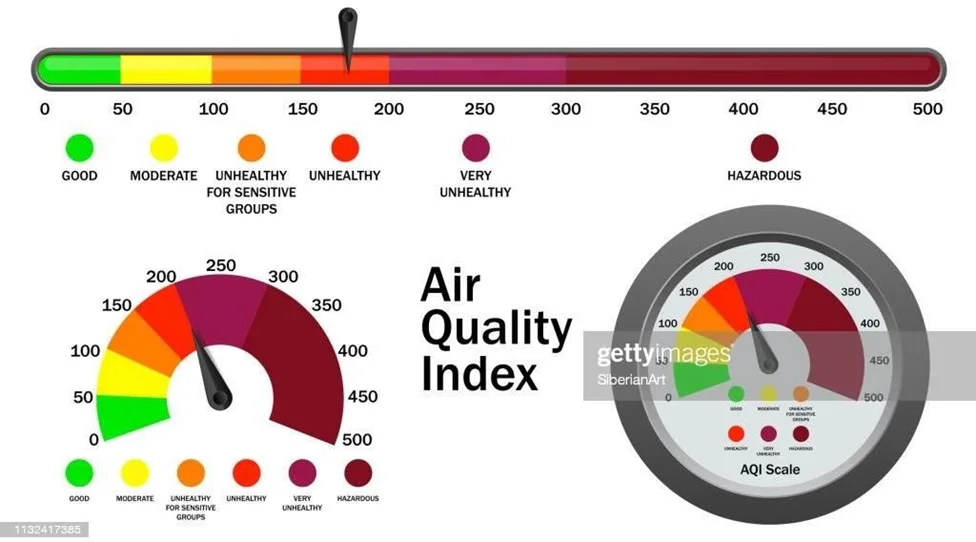
Indoor Management
Air quality management indoor, not to use any traditional coal burning, or firing. Low power usage,
Effect on human health
Smog, which is a combination of smoke and fog, primarily consists of pollutants such as particulate matter (PM), ground-level ozone, nitrogen dioxide, sulfur dioxide, carbon monoxide, and volatile organic compounds. Exposure to smog can have significant effects on human health. Here are some of the health implications associated with smog:
Respiratory issues
Inhalation of smog can lead to respiratory problems, including irritation of the eyes, nose, and throat. It can exacerbate pre-existing respiratory conditions such as asthma, bronchitis, and chronic obstructive pulmonary disease (COPD).
Cardiovascular problem
Long-term exposure to smog has been linked to an increased risk of cardiovascular diseases. It can contribute to the development of heart attacks, strokes, and other cardiovascular problems.
Reduced lung function
Prolonged exposure to smog can lead to a decline in lung function, especially in children and adolescents. This can result in decreased lung growth and development.
Increased respiratory infection
Smog can weaken the immune system’s response to respiratory infections, making individuals more susceptible to illnesses such as pneumonia and bronchitis.
Cancer risk
Some components of smog, such as benzene and formaldehyde, are known carcinogens. Long- term exposure to these pollutants may increase the risk of developing certain types of cancer
Pregnancy complication
Pregnant women exposed to high levels of air pollution, including smog, may face an increased risk of complications such as preterm birth, low birth weight, and developmental issues in their children.
Systemic inflammation
Exposure to smog can lead to systemic inflammation in the body, which is associated with various health problems, including diabetes and other chronic diseases.
New Methods or Techniques to deal the curse
New technologies which can be improved the air quality
Air pollution is one of the serious problems for Pakistan, which is consistently increasing with time. Here are some new techniques which could help to improve the quality of air.
1. Gas to liquids
2. Hydrogen fuels additive
3. Liquid air
4. Air purifications
Emission Control Technologies:
Emission control technologies are designed to reduce the release of pollutants into the
atmosphere from various sources, including vehicles, power plants, and industrial facilities. These technologies play a crucial role in improving air quality and mitigating the impact of pollution on the environment and human health. Here are some common emission control
technologies:
Catalytical converters
Vehicles
Catalytic converters are installed in the exhaust systems of vehicles to convert harmful pollutants, such as nitrogen oxides (NOx), carbon monoxide (CO), and unburned hydrocarbons, into less harmful substances through chemical reactions.
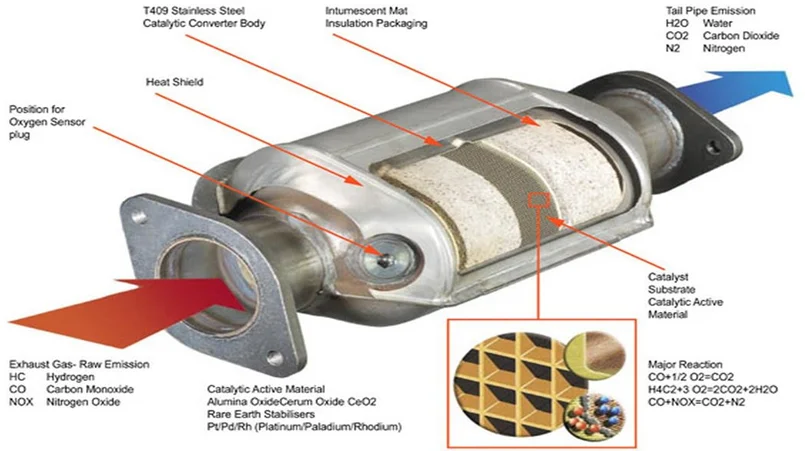
https://abcservicescheltenham.co.uk/catalytic-converters/
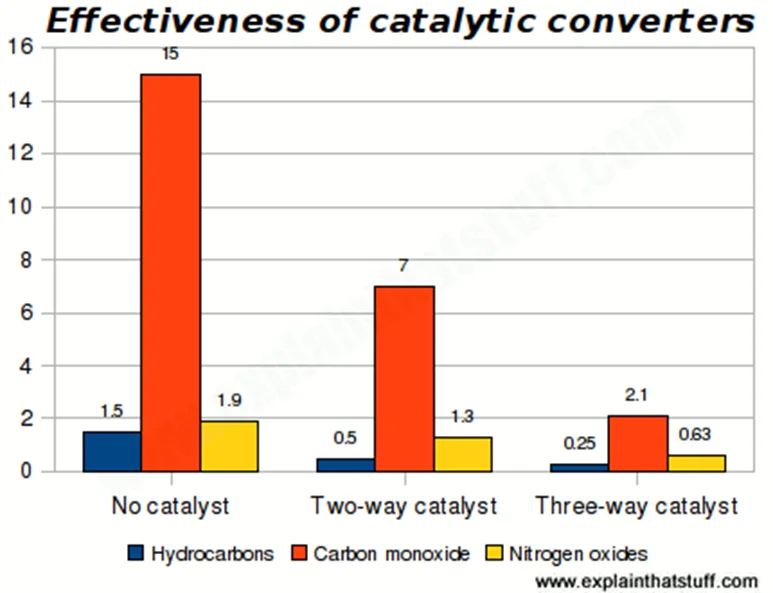
Catalytic converters are mainly designed to reduce immediate, local air pollution—dirty air where you’re driving—and this chart certainly seems to suggest that they’re effective. Even so, people sometimes question whether they’re really as green as they seem. It’s important to remember that they reduce emissions rather than eliminate them completely.
One problem is that they only really work at high temperatures (over 300°C/600°F or so), when the engine has had chance to warm up. Early types of catalytic converters typically took about 10– 15 minutes to warm up, so they were completely ineffective for the first few kilometres/miles of a journey (or any part of a very short journey). Modern converters warm up in only 2–3 minutes; even so, significant emissions can still occur during this time.
Selective catalytic reduction (SCR)
- Power plants, industrial facilities, and large diesel engines
- SCR systems use a catalyst and a reducing agent (usually ammonia or urea) to convert nitrogen oxides (NOx) into nitrogen, water, and carbon dioxide.
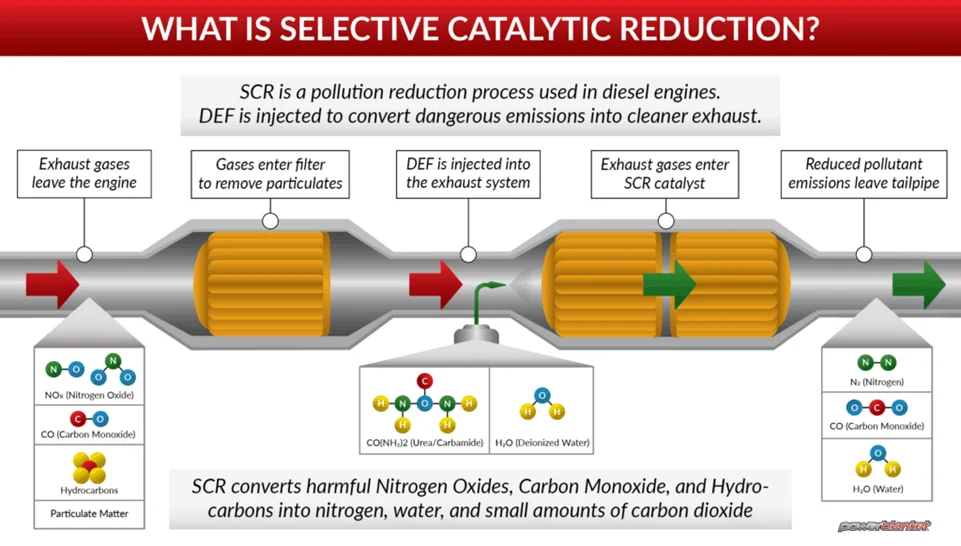
https://www.powerblanket.com/wp-content/uploads/2020/01/Selective-Catalytic-Reduction-01.png
particulate matters filters
Diesel Particulate Filters are an EPA requirement on class 5 or higher diesel-powered trucks, model year 2007 and newer. A DPF is designed to control emissions by trapping the particulate matter within a filter. In essence, your DPF acts as a garbage can for your exhaust system. The particulate filter removes soot particles from the exhaust by passing the exhaust gases through a ceramic wall flow filter. Solid soot particles are then trapped on or in the ceramic filter wall.
There are 200 cells per square inch inside the filter, with each cell measuring 3/64″ square. This continues throughout the depth of the filter. The cells create a large porous surface area to trap any material entering the filter. Soot can be trapped along the edge of the wall or anywhere with the “sponge” like structure.
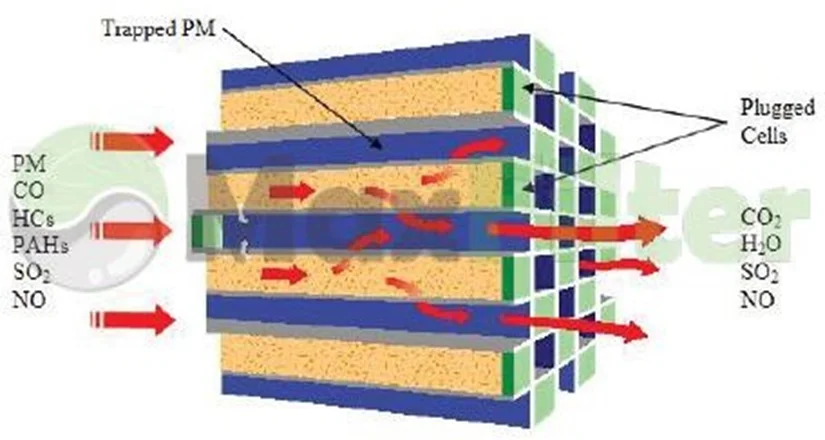
https://radiatorpros.com/how-a-dpf-works/#:~:text=Diesel%20Particulate%20Filters,sponge%22%20like%20structure.
Electrostatic precipitators
- Power plants and industrial facilities
- Electrostatic precipitators remove particulate matter from flue gases by using an electrostatic charge to attract and collect particles on charged plates or
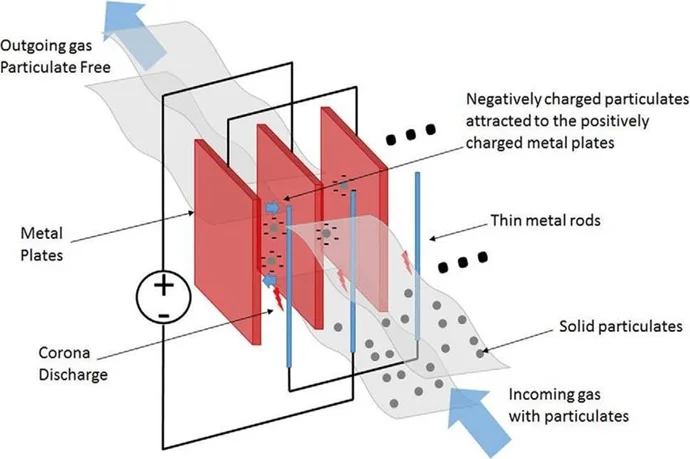
Renewable source energy
Transition to cleaner and renewable energy sources, such as solar, wind, and hydroelectric power, to reduce emissions from power generation
Improve transportation
Encourage the use of electric vehicles, public transportation, and other sustainable transportation options to reduce emissions from the transportation sector.
Promote sustainable agriculture
Implement agricultural practices that minimize the use of chemical fertilizers and pesticides, reducing the release of ammonia and other pollutants.
Waste management:
Improve waste management practices, including recycling and proper disposal methods, to reduce the release of pollutants from burning and decomposition of waste.
Public awareness and education:
Raise awareness about the impact of individual and industrial activities on air quality, promoting responsible behaviour and support for clean air initiatives.
Urban planning:
Design cities with a focus on reducing traffic congestion, promoting green spaces, and implementing measures to improve air quality.
Plantation
Trees Improve Air Quality
Trees absorb and capture particles in the air through their leaves, acting as a physical filter for molecules that can damage our bodies, but which trees can use efficiently to grow. Trees use carbon to grow wood and leaves, and nitrogen, sulfur and other molecules to make and store energy. When CO, CO2, NO2 and other pollutants are absorbed by trees and other plants, a biochemical process divides the oxygen from the other molecules and releases it back into the air. The oxygen released as a gas and as water vapor contributes to diluting the air as a consequence of filtration.
Active filtration is an important mitigation tactic in managing air pollution, but it’s not the only way that urban trees affect air quality. Tree crowns are physical barriers to heavier molecules that fall from the atmosphere onto the ground. The leaves collect dust and solid particles that build upon them, which then get rinsed away with rain.
Using all vertical layers of the understory, different sized trees capture falling particles along the way down, and dense shrubs and evergreens act as barriers that can block the horizontal spread of pollutants. They also slow down the wind, which interrupts the spread of dust and pollutants across an area. Trees keep an area slightly more humid, and soil more stable, further slowing the ability of fine particles to spread horizontally by air.
Another way that the canopy’s physical barrier affects air quality is by casting shade and lowering temperatures. In conjunction with raising the immediate area’s humidity, the cool cover that a tree’s crown provides reduces the dangerous formation of ground-level ozone concentrations. High temperatures create more ozone, which is formed when UV rays from sunlight create a gaseous chemical reaction with the pollutants released by cars and other
industrial emissions. As ozone builds, it absorbs more UV heat, raising the ambient temperature even more.
Plants that are effective in reducing smog typically have characteristics such as the ability to absorb pollutants, release oxygen, and provide shade. One mature tree can remove 0.2 tons (400 pounds) of carbon dioxide (CO2) per year. This figure doesn’t include the other main pollutants that are released by cars and industrial activities, such as carbon monoxide (CO), nitrogen dioxide (NO2) and sulfur dioxide (SO2). These gasses collect in the atmosphere and result in smog and ozone, which are toxin-rich air concentrations that can cause asthma, bronchitis and other lung diseases in humans. As it happens, trees make good use of these molecules as well, further reducing air pollution. Here is a list of plants that are known for their air-purifying properties and can contribute to reducing smog:
Trees:
- Oak (Quercus spp.)
- Pine (Pinus spp.)
- Spruce (Picea spp.)
- Maple (Acer spp.)
- Poplar (Populus spp)
- Willow (Salix spp.)
- Sweetgum (Liquidambar spp.)
Shrubs
- Boxwood (Buxus spp.)
- Juniper (Juniperus spp.)
- Azalea (Rhododendron spp.)
- Rhododendron (Rhododendron spp.)
- Spiraea (Spiraea spp.)
Grasses
- Bamboo (Bambusoideae spp.)
- Fountain Grass (Pennisetum setaceum)
- Switchgrass (Panicum virgatum)
Flowering plants
- Lavender (Lavandula spp.)
- Geranium (Pelargonium spp.)
- Spider Plant (Chlorophytum comosum)
- Peace Lily (Spathiphyllum spp.)
- Aloe Vera (Aloe barbadensis miller)
- Snake Plant (Sansevieria trifasciata)
Ground cover
- English Ivy (Hedera helix)
- Creeping Fig (Ficus pumila)
- Ajuga (Ajuga spp.)
Vines
- Climbing Rose (Rosa spp.)
- Honeysuckle (Lonicera spp.)
- Boston Ivy (Parthenocissus tricuspidata)






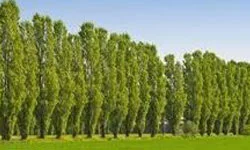

These plants contribute to air quality improvement by absorbing carbon dioxide, releasing oxygen, filtering particulate matter, and, in some cases, absorbing specific pollutants. Keep in mind that the effectiveness of these plants can vary depending on local conditions and the specific pollutants present in the air. Additionally, planting a variety of species is often more beneficial than relying on a single type of plant for air purification.
Emissions and Distribution
When planning to plant trees for air quality improvement, scientists consider two factors to focus on: the “sources” and the “sinks.” In general, “sources” release carbon pollutants into the atmosphere and “sinks” absorb them. The relationships between these is essential in deciding how to intervene with the most effective solutions. Planting trees along road corridors, for example, is important as an intervention that captures as much pollution as possible at the site and mitigates horizontal spread.
High-traffic areas, however, shouldn’t be covered at the top since this can hold too much pollution near the ground where people are driving, walking or residing. In this case, it’s actually preferable (or less directly dangerous) for the particles to be released vertically to disperse into the atmosphere, where they are diluted by spreading out in the air and processed by the climate’s water cycle, of which trees are a fundamental part. That is, of course, unless they can be captured at the source, or the point of release.
The open atmosphere is one of many environmental sinks — the places where dispersed pollution is absorbed. A tree canopy is another one, and good coverage of our yards, parks and other grounds provides an important filter and shield from falling pollution particles. The less pollution that builds up near the ground, the fewer humans and wildlife will breathe in the toxins.
These plants contribute to air quality improvement by absorbing carbon dioxide, releasing oxygen, filtering particulate matter, and, in some cases, absorbing specific pollutants. Keep in mind that the effectiveness of these plants can vary depending on local conditions and the specific pollutants present in the air. Additionally, planting a variety of species is often more beneficial than relying on a single type of plant for air purification.
WCSP working on smog reduction. Our projects waste to plantation and solid waste digestors are helping society, and country.
Be closer to nature, plant more trees, more water cleaning and lesser fossil fuel usage, always help to mitigate smog.

